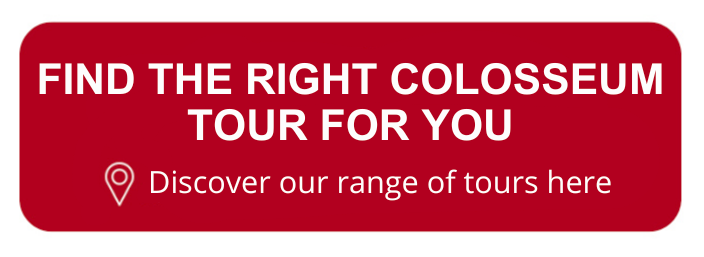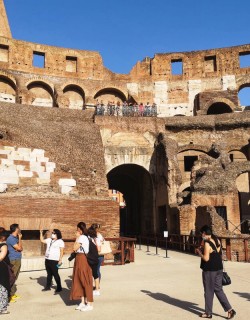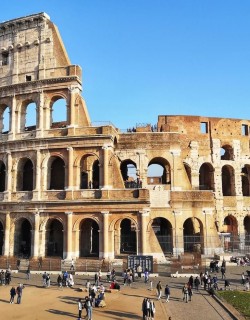Newly Updated Feb 18, 2025
The Colosseum is one of the world's most iconic landmarks and is an absolute 'must' on any visitor's list of top things to see during their stay in Rome. An annual 9.8 million visitors can't be wrong. With up to 25,000 visitors a day at peak times, a dizzying variety of ticket options, and constantly changing rules and regulations, it can feel overwhelming to figure out the best way to visit this ancient symbol of Rome and choose the right option for you.
Here, we break down all the little details, including what's new in 2025. From ticket options to how to book and when to visit, these are all the tips and tricks you need to know to make your visit memorable for all the right reasons! Remember, when visiting Rome's biggest attractions, planning and preparation are key.
A Brief History of the Colosseum
The Colosseum, originally known as the Flavian Amphitheater, is an ancient Roman arena that is arguably the most famous landmark of the antique world. Built between 70-80 AD, it was used for gladiator battles, public spectacles, and gruesome mythological re-enactments. Holding up to 50,000 spectators, it’s an incredible example of the engineering skill of ancient Romans, but also their insatiable bloodlust. For the full story, check out our detailed history of the Colosseum here: Rome’s Ancient Icon - An Express Guide to the Colosseum.
Is a Tour of the Colosseum Worth it?
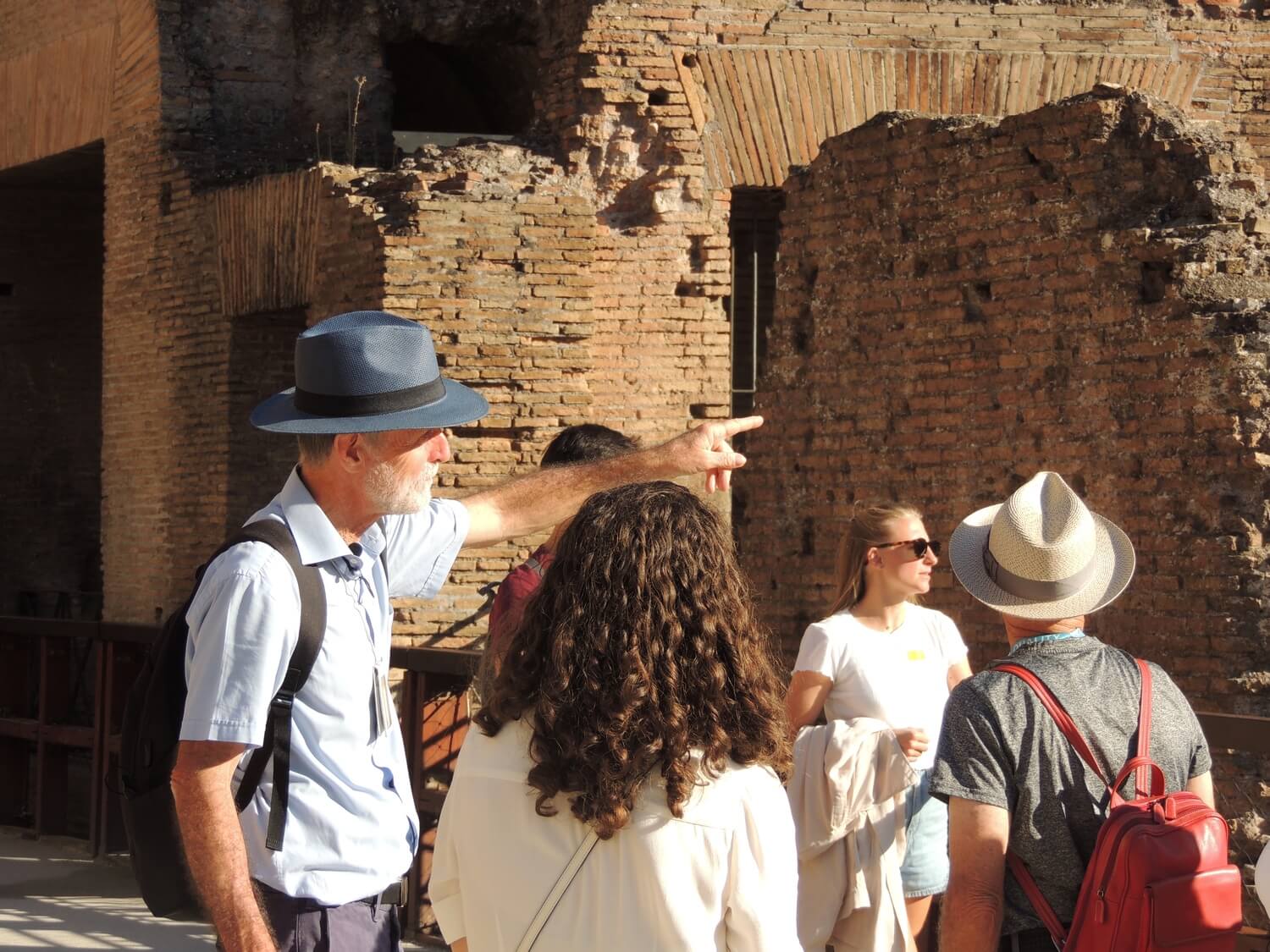
Undoubtedly, the most stress-free way to visit the Colosseum is on a guided tour. Forget about sourcing hard-to-get tickets, figuring out what to bring, or where to pick up your reservation. Your expert guide will meet you, whisk you through security, and have all your entrance tickets pre-arranged.
Once inside, your guide knows the best routes around this vast amphitheater and will show you where all the hidden treasures can be found. The Colosseum is a sprawling archaeological site (about 6 acres and over several levels) - there's little in the way of signposting or on-site explanations for what you are seeing. Unless you're an archaeologist, it can be tricky to figure out what you're looking at.
We offer tour options with something different to suit everyone, from group to private options, and access to different restricted areas. Check out a few of our itineraries below, or for a fuller guide read our article on the best tours to take of the Colosseum and why.
- Colosseum with Gladiator Arena Floor, Forum, and Palatine Hill Semi-Private Tour
- Ultimate Colosseum Semi-Private Tour with Roman Forum & Palatine Hill
- Private Colosseum Tour with Ancient Rome: Immersive Experience
If, on the other hand, you feel confident in your planning abilities and have visited the Colosseum before, it may be worth it to go it alone and plan an independent visit.
What Are the Opening Hours of the Colosseum?
Opening hours of the Colosseum vary seasonally, with the last entrance one hour before closing time.
- January 2 to March 29: 8.30 am – 4.30 pm
- March 30 to September 30: 8:30 am – 7:15 pm
- October 1 to October 26: 8:30 am – 6:30 pm
- October 27 to December 31: 8:30 am – 4:30 pm
- Closed: Jan 1st; May 1st; Dec 25th
When Should I Visit the Colosseum?
As one of Europe's most visited tourist sites, the Colosseum is always busy. However, July and August are the busiest months to visit. If you want to optimize your experience and avoid the worst of the crowds, I'd suggest arriving early in the morning (before 10 am) or later in the afternoon before closing time.
How Much Do Colosseum Tickets Cost?
- A basic Colosseum ticket, including access to the Roman Forum and Palatine Hill, costs €18 (including €2 booking fee).
- Children under 18 enter free; staff at the entrance will ask for a valid ID with proof of age.
- For EU students 18- 25 years old, tickets cost €4 (with a valid ID)
- Some other groups are eligible for free entrance, including those with disabilities.
Can I purchase My Tickets On-Site?
Technically, yes. However, I wouldn't recommend it. The tickets are limited and allocated in timed slots on a first-come, first-served basis. You may arrive in the early morning to discover that the only tickets available are for a 4 pm slot. So you'll have to waste time waiting around. And that's if the tickets for the day don't sell out, leaving you empty-handed and disappointed. The closest ticket office is located at Piazza del Colosseo.
How to Book Colosseum Tickets Online?
To book tickets online, visit the official Parco Archeologico Dei Colosseo website. It's not the most user-friendly website, but it does translate into English to make it more accessible.
Tickets are only released a month in advance and are strictly allocated according to timed slots. Please remember this when you make your reservation. If you miss your time slot, you won't be admitted.
Dates highlighted in green have available tickets; you will see how many tickets are available for each time slot (at 10-15 minute intervals to control crowds). The tickets are not transferable, so you'll have to enter the full name of everyone in your party when you book. Under 18's are free and can enter with adults. You pick up their free ticket inside (for access to restricted areas, you need to reserve their free place in advance - see below)
Once you complete the booking process, you'll receive two emails: your receipt and a PDF file that includes your virtual ticket.
You don't need to print the ticket; present the QR code on your phone at the entrance. If you don't have a smartphone, you can print the PDF and present it at the entrance instead.
Can't find the email? Check your spam folder.
What are the Different Types of Tickets for the Colosseum?
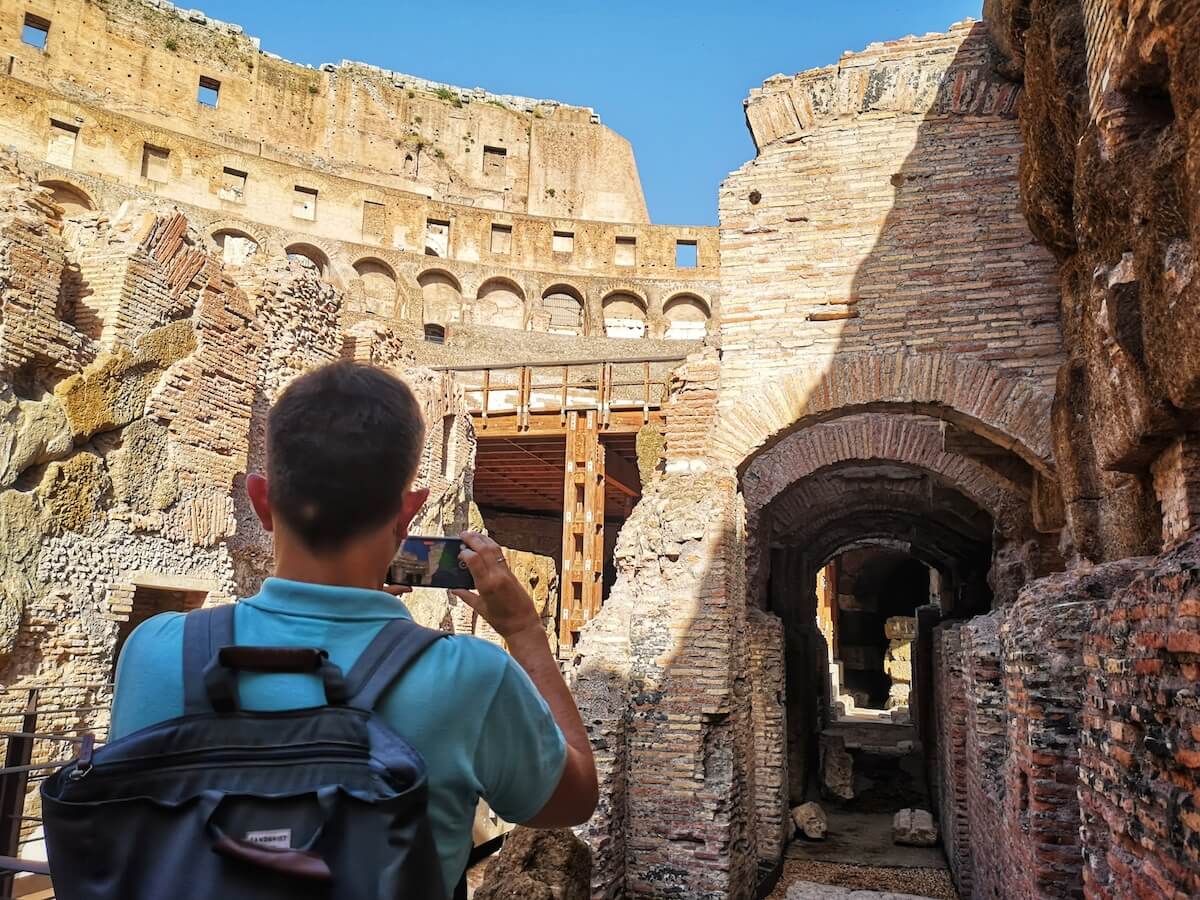
When you navigate the Colosseum ticket website, you'll discover a vast array of ticket options at different price points. Below, however, are some of the most popular options:
- 24Hr Only Arena €18 (incl. booking fee)
Brand new from May 2024, the new 24Hr Only Arena ticket is valid 24 hours from the first access. It includes entrance and exit from the Sperone Stern side, with a visit only to the arena floor; it also includes the Roman Forum, the Palatine, the SUPER sites and the Imperial Forums, and the current exhibitions as long as they are valid for 24 hours from the first access stamp.
- Ordinary ticket € 18 (incl. booking fee)
Valid for 24 hours: allows one entrance to the Colosseum (at a fixed time) and one entrance to the Forum, Palatine Hill and Imperial Fora (it's up to you whether to visit these before or after you Colosseum time slot).
- Full Experience Arena ticket € 24 (incl. booking fee)
Valid for two days, it allows one entrance to the Colosseum with access to the Arena Floor and one entrance to the Roman Forum, Palatine Hill, and SUPER sites.
- Full Experience Underground and Arena ticket € 24 (incl. booking fee)
This is the ultimate access ticket. It grants entry to all of the above AND exclusive access to the Colosseum Underground (hypogeum). Under-18s are entitled to a free ticket; however, they must reserve a spot as numbers are strictly regulated in the underground area. On the website, you'll find an option to reserve a free ticket for this experience. This ticket is valid for 48 hours, so you'll be able to spread out your visit to the Forum, Palatine and Imperial Fora over 2 days if you wish. These sell out incredibly fast, as visitor numbers are limited in the Underground areas.
- Full Experience Attic € 24 (incl. booking fee)
This is new ticket option allows you to visit the panoramic attic level of the Colosseum, which has recently been restored and reopened to the public. A panoramic lift whisks you up to the top tiers of the amphitheater, where incredible views await. Note that the panoramic lift is only open from 8.30 am to 2.10 pm.
What Are the Roman Forum S.U.P.E.R Sites?
The Roman Forum S.U.P.E.R sites are an acronym (Seven Unique Places to Experience Rome) for previously restricted archaeological areas within the Roman Forum and Palatine Hill.
Recently, the Italian Ministry of Culture launched an initiative to allow visitors access to these areas, some of which have been closed to the public for decades. All you need to do is make sure that you buy the SUPER Pass. With this ticket, you can enter places like the House of Augustus, the residence of Rome's first emperor, complete with vibrant ancient frescoes.
To find out more about these SUPER sites and how to visit them, check out our blog, which has everything you need to know.
Can I visit the Colosseum's Upper Tiers?
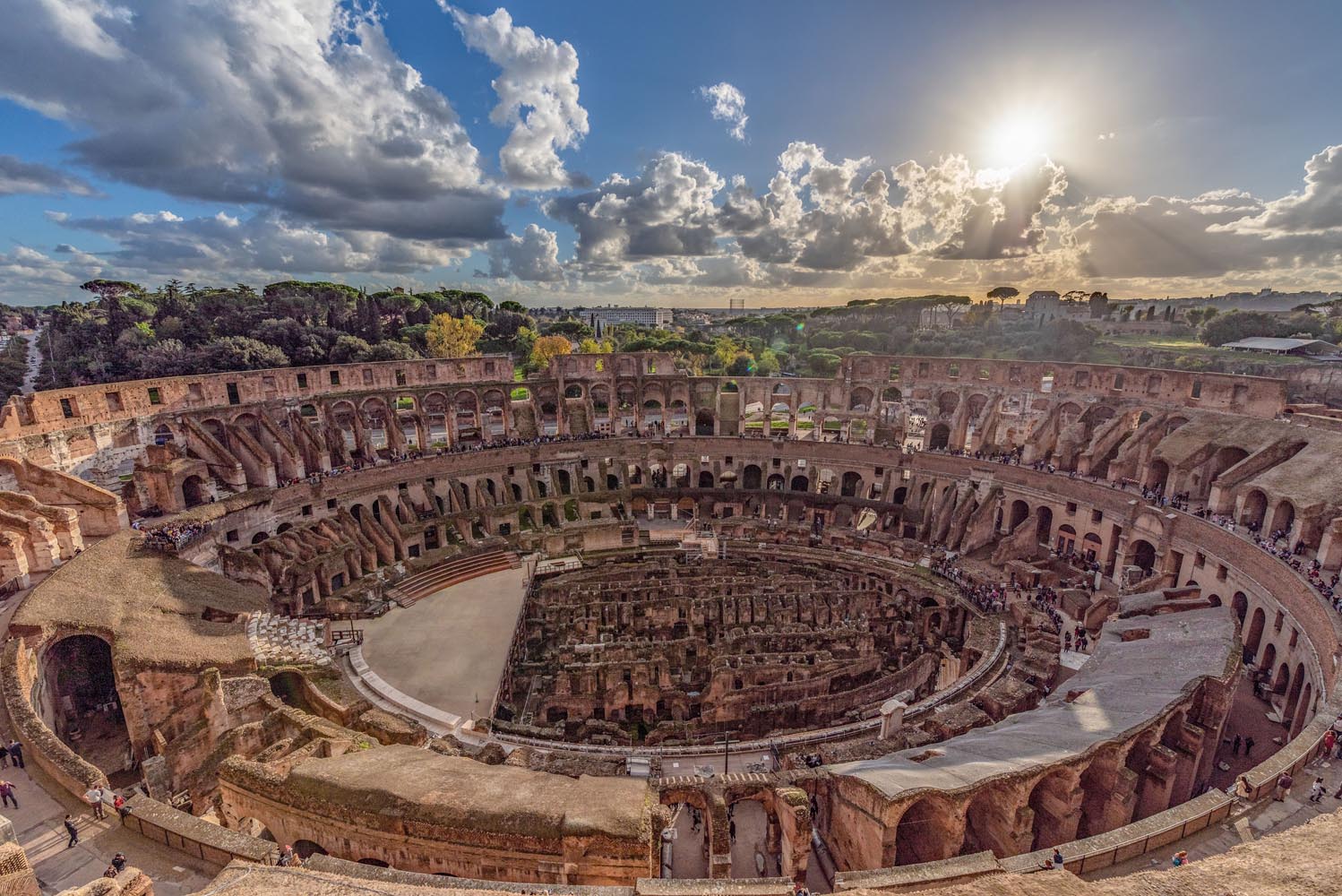
The Spectacular Views From the Colosseums Upper Tiers
In May 2024, after a long restoration project, the upper tiers of the Colosseum were reopened to the public. Tickets are limited in number, and access is restricted to guests accompanied by a licensed guide. The unforgettable highest levels of the Colosseum are some the most exclusive areas that you can visit today, but in ancient Rome things were very different. The third tier was the haunt of male commoners, whilst the fourth and fifth levels were crowded with the lowest status citizens of Roman society (including common women and slaves) clamouring to get a glimpse of the spectacle.
Can I Go Inside the Colosseum at Night?
From late spring to fall, the Colosseum invites a select number of guests to explore the ruins after it has closed its gates to the public. This is an exclusive opportunity that few people will ever experience. Tickets are strictly limited, and you must book in advance. Visits only occur on a Thursday evening, and you will have to follow an official Colosseum guide.
Can I use the Roma Pass to Enter the Colosseum?
Yes. You can use the Roma Pass to enter the Colosseum. You'll be prompted to choose a date and time slot at the checkout when purchasing your pass. You can also buy your Roma Pass directly through the CoopCulture website and pick up the pass when you arrive for your visit.
Are Tickets to the Colosseum Free on the First Sunday of Each Month?
Yes. The Colosseum is free to enter for everyone on the first Sunday of each month. The free tickets are allocated on a first-come, first-served basis. In addition, the restricted access areas are not available to visit on free Sundays. Needless to say, the lines are long, and I wouldn't recommend the experience. Quite frankly, it's a zoo on free days.
So now you have all the insider info on how and when to visit the Colosseum. The only choice left is whether you go it alone or opt for a personal guided tour. If you need more help deciding which ticket is right for you or you opt to join a guided tour, then check out our blog for the best tours of the Colosseum so you can choose the best one for you.
Arriving at the Colosseum: Know Before You Go
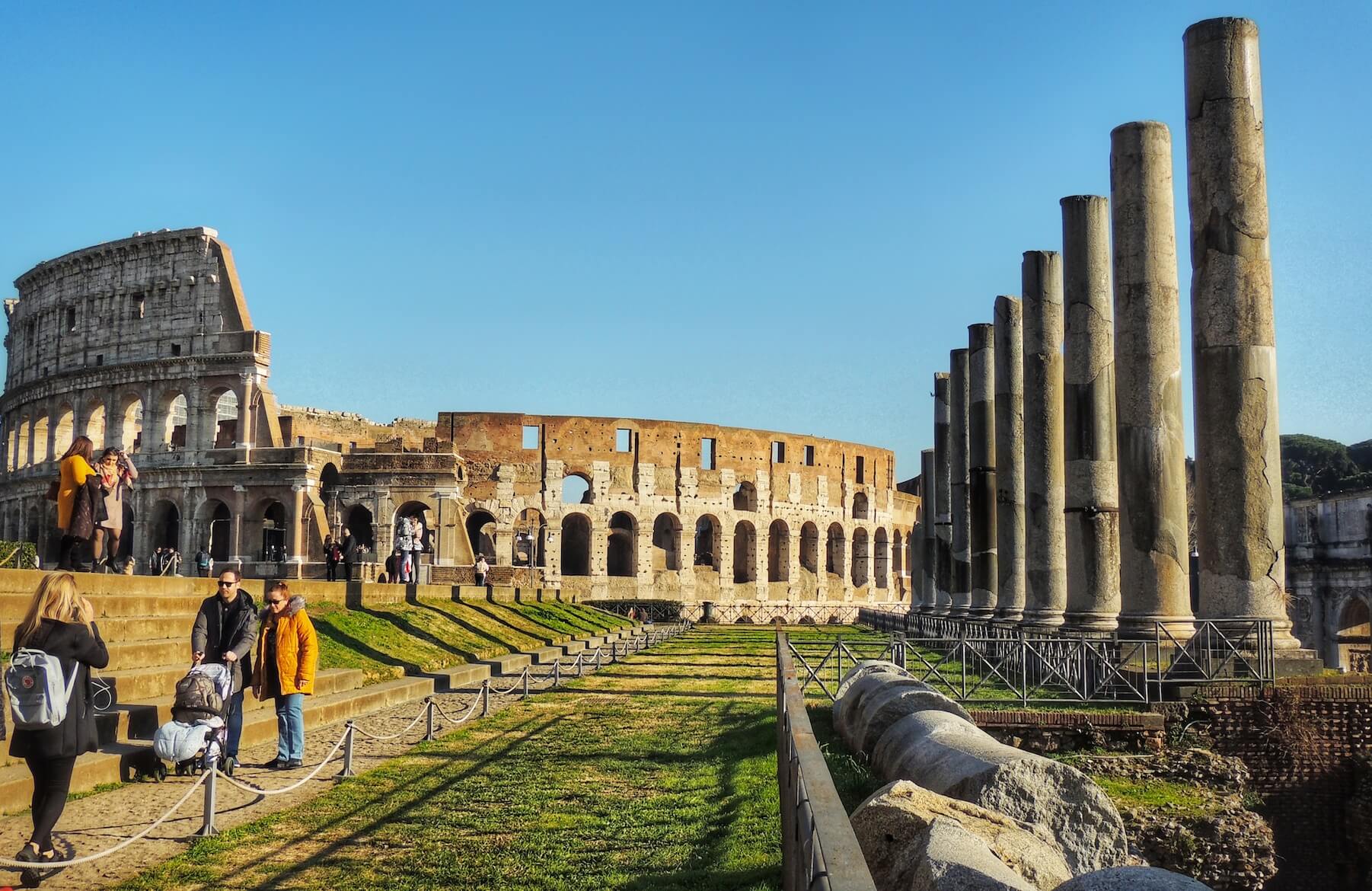
- Arrive Early:
The Colosseum recommends arriving at least 15 minutes before your allocated time slot. This is because ALL visitors must pass through 'airport-style' security to enter. Whether you've booked a skip-the-line entrance or not, you must clear security first.
- No Big Backpacks:
The Colosseum prohibits large backpacks or wheeled suitcases inside and does not store luggage on site. Additionally, objects like glass bottles, knives, other sharp objects, and aerosol sprays are forbidden and will be confiscated.
- Bring your ID:
Remember, your ticket has your name on it, so be sure to bring your ID to prove you are who you say you are!
- Wear Comfortable Shoes:
The Colosseum is a large archaeological site with lots of stairs and sometimes uneven terrain, especially in the underground area. Leave the fancy footwear for your dinner reservation!
- Bring Sunscreen, a Hat, and Water:
Similarly, I suggest you bring sunscreen and a hat, as it gets hot in the summer and shade can be challenging to find. A plastic reusable water bottle is also a good idea to keep hydrated on summer days (you can top up at fountains inside).
- Baby Pit Stop:
In 2023, the Colosseum opened a dedicated area on the second floor for familes with babies and young kids. It's an ideal space to escape to if the crowds become too much, you need an emergency diaper change, or a quiet place to breastfeed.
- Allow Enough Time:
You're not going to breeze in and out of the Colosseum in less than an hour, especially if you want to visit all the levels, take in some of the exhibits, and snap a few pics. Indeed, if you have a special access ticket to the Arena and Underground, you will need to allot more time.
How to Get to the Colosseum
Metro:
The metro is the fastest and most convenient way to reach the Colosseum. Take Metro Line B to the Colosseo station—once you exit, the massive amphitheater will be immediately visible on your left.
Bus:
Several buses stop near the Colosseum. Before boarding, check that your bus passes by Colosseo. Some common routes include 40, 51, 60, 75, 81, 175, and 204.
On Foot:
Located at the junction of Via dei Fori Imperiali, Via Labicana, and Via Celio Vibenna, the Colosseum is easy to find. Simply follow one of these roads, and you’ll spot it in no time.
What to See Near the Colosseum
Strategically located in the heart of downtown Rome, there are lots of great things to see near the Colosseum. From ancient ruins to charming piazzas and wonderful hidden churches, you could easily spend a full day in the area without ever leaving the shadow of the amphitheater. We’ve curated a list of the top things to do near the Colosseum to help you make the most of your trip to Rome. Check it out here! What to do near the Colosseum.
We hope you found this guide to visiting the Colosseum in 2025 useful! For 25 years, Through Eternity have been organizing expert-led tours to the Colosseum and Ancient City. If you're planning a visit to the Eternal City, check out our range of Colosseum itineraries!
MORE GREAT COLOSSEUM CONTENT FROM THE BLOG:
- Top Things to Do Near the Colosseum
- Gladiators in the Colosseum: An Introduction
- Did the Colosseum Have a Roof?
- 5 Fascinating Facts About the Colosseum's Arena Floor
- The Colosseum Underground: The Deadliest Show on Earth
- The Best New Tours of Italy in 2024
- Where to Stay in Rome in 2024: Areas and Hotels Guide
- Rome's Ancient Icon: An Express Guide to the Colosseum


